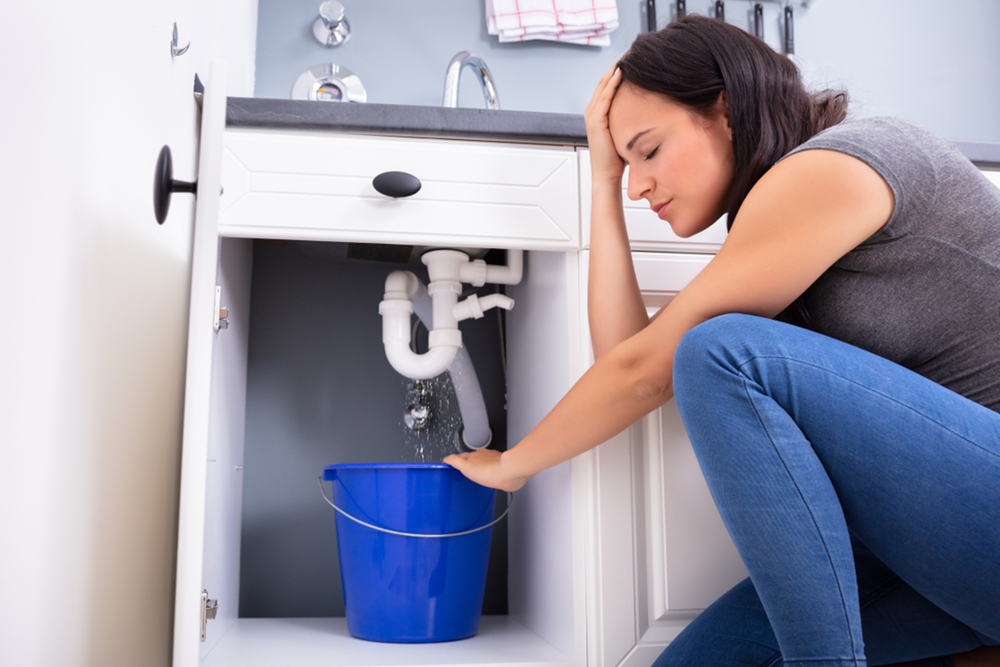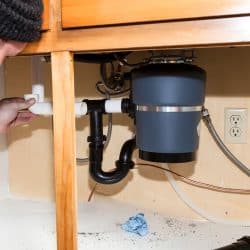Handy Methods for Fixing a Dripping Garbage Disposal
Handy Methods for Fixing a Dripping Garbage Disposal
Blog Article
Here below you can discover some sound news in relation to Why Is My Garbage Disposal Leaking From the Bottom?.

Waste disposal unit are essential cooking area appliances that assist in getting rid of food waste successfully. Nevertheless, a dripping garbage disposal can be an aggravating and untidy issue to manage. The good news is, many leaks can be repaired easily with a few simple actions. In this article, we will certainly go over how to fix a leaking garbage disposal successfully.
Intro
Waste disposal unit are installed under kitchen sinks and are created to shred food waste right into smaller sized pieces, permitting it to travel through the pipes system conveniently. While these devices are typically trustworthy, leakages can take place in time due to wear and tear, loose links, or damages to the system.
Usual Root Causes Of Leaks in Rubbish Disposals
Worn Seals and Gaskets
Seals and gaskets play a vital function in preventing water from dripping out of the waste disposal unit. In time, these components can deteriorate, bring about leaks around the disposal system.
Loose Connections
The links in between the waste disposal unit and the plumbing system can come to be loosened with time, causing water to leakage out throughout procedure.
Cracks or Openings in the Disposal System
Physical damages to the waste disposal unit, such as fractures or openings in the housing, can also lead to leaks.
Recognizing the Resource of the Leakage
Before attempting to deal with a leaking garbage disposal, it is vital to recognize the resource of the leakage. This can commonly be done with aesthetic evaluation or by carrying out simple tests.
Visual Examination
Evaluate the garbage disposal unit thoroughly for any type of indicators of water leak. Pay attention to locations around seals, gaskets, and connection factors.
Checking for Leakages
One way to test for leaks is by running water via the disposal unit and looking for any noticeable signs of leakage.
Tools and Products Needed for Fixing a Leaking Waste Disposal Unit
Prior to beginning the repair work process, collect the essential devices and products, consisting of a screwdriver, flexible wrench, plumbing professional's putty, replacement seals or gaskets, and epoxy or patching product for repairing cracks or holes.
Step-by-Step Guide to Taking Care Of a Dripping Waste Disposal Unit
Turn Off the Power
Before attempting any repairs, guarantee that the power to the garbage disposal device is turned off to stop the risk of electrical shock.
Locate the Leakage
Identify the specific place of the leakage and establish the reason.
Tighten Connections
Make use of a wrench to tighten up any kind of loose links in between the disposal system and the plumbing system.
Change Seals or Gaskets
If the leak is due to worn seals or gaskets, remove the old components and replace them with new ones.
Patching Cracks or Openings
For cracks or holes in the disposal device, use epoxy or an ideal patching product to secure the broken area.
Testing the Garbage Disposal After Fixing
Once the repair work is complete, test the waste disposal unit by running water through it to make sure that the leakage has been settled.
Preventive Maintenance Tips to Avoid Future Leakages
To stop future leaks, it is necessary to perform regular maintenance on your garbage disposal. This includes keeping it tidy, preventing placing non-food things or hard items down the disposal, and periodically looking for leaks or other issues.
Final thought
Finally, dealing with a leaking garbage disposal is a relatively straightforward process that can be finished with fundamental devices and products. By following the actions laid out in this short article and practicing precautionary maintenance, you can keep your garbage disposal in good working problem and avoid expensive repair work in the future.
What to Do About a Leaking Garbage Disposal
A leaking garbage disposal often goes unnoticed until you confront a sopping cabinet, a foul-smelling puddle, or an audible drip-drip-drip from the unit. The fix can be frustrating, too, because the leak can stem from a number of components in the system. Fortunately, with a little sleuthing, you can zero in on the leak and—depending on the exact location—stop the icky oozing and repair the component that caused it. Worst case scenario, if it turns out that the garbage disposal must be replaced, installing a new one is a reasonable do-it-yourself task for those with basic plumbing skills. Read on to keep the cash you’d otherwise hand over to a pro.
Prepare to find the leak
Prior to testing the garbage disposal for leaks, unplug it at the wall outlet and turn off the power from the breaker box to prevent electrical shock. Then insert a watertight sink stopper into your sink drain and wipe the unit dry with a clean cloth. In any handy container, mix a few drops of food coloring into a few cups of water, and pour the dyed water onto the sink stopper to help you locate the leak.
Investigate the source
the top, where the disposal meets the sink drain the side, where the dishwasher hose or main drain pipe connects to the disposal or the bottom of the unit Inspect each of these locations while gliding a light-colored rag over the unit; the dyed water will readily show on the rag and reveal the location of the leak. If a leak isn’t immediately apparent, remove the sink stopper and pour a few more cups of dyed water down the sink drain, then check for leaks again. Leaks near the top of the unit are more likely to show themselves while the sink is plugged, while side and bottom leaks are more noticeable while the sink is unplugged.
The metal sink flange that sits directly inside the sink drain is typically sealed around the top with plumber’s putty (a clay-like sealant) and then secured from under the sink with bolts. If the plumber’s putty deteriorates, or the bolts loosen, the flange can no longer form a watertight seal between the sink drain and the disposal—which could cause a leak at the top of the unit.
To reseal the leaky flange, you must first detach the garbage disposal. Start by loosening the screws securing the main drain pipe to the disposal, then loosen the screws in the metal clamp securing the dishwasher hose to the disposal and detach the drain pipe and dishwasher hose from the disposal. Loosen the screws in the mounting ring that connects the disposal to the metal mounting assembly beneath the sink, then pull down the disposal and carefully set it on a clean, dry surface. Loosen the bolts in the mounting assembly with a wrench, then pull down the mounting assembly and set it near the disposal.

Do you really like reading up on How to fix a pretty consistent leak from my garbage disposal? Place a comment below. We will be glad to listen to your responses about this page. In hopes to see you back again before long. Are you aware of another individual who is occupied with the topic? Be sure share it. I appreciate reading our article about Why Is .
Click For More Info Report this page